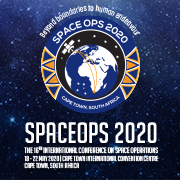›International Cargèse School on Astrophysical Jets
Scientific Rationale
Jets are expected to be present in different astrophysical sources in our Galaxy, as well as in the deep Universe. These sources include Active Galactic Nuclei (AGNs), Gamma-Ray Bursts (GRBs), Microquasars, Young Stellar Objects (YSOs), etc. The spatial and temporal characteristics of these jets differ from one object to another, but there are several phenomena that have common origins and/or explications. For instance the particle acceleration mechanisms and radiative processes that are at play are often very similar. The theoretical and experimental approaches that have been developed for a given object class (simulations, numerical modeling, data reduction techniques) could be shared and compared among the different communities, who would greatly benefit from each other's experience. Focussing mainly on the high energy part of the electromagnetic spectrum (X-rays and above), several common mechanisms are invoked in order to explain the observed radiation over 9 decades of energy (from keV to TeV). From the particle acceleration point of view (shocks and diffusive shock acceleration, stochastic acceleration, etc.), as well as from the radiative one (e.g. synchrotron, inverse Compton, Bremsstrahlung emission in leptonic models and hadronic models), astrophysical jets show striking similarities, but also some differences, especially in terms of the maximal energy the particles reach (from the trans-relativistic to the ultra-relativistic regime), their injection rate, their close environment, and their temporal evolution. From the instrumental point of view, we are currently witnessing a “golden era” of high-energy astronomy - both space based and ground based (e.g., Pierre Auger, H.E.S.S., MAGIC, VERITAS, Fermi, Swift, INTEGRAL, XMM Newton, Chandra) - and some projects for the future are already foreseen to take over in the same domain (SVOM, CTA, ATHENA, etc.), as well as in closely related fields, potentially providing further constraints to the acceleration and radiation processes (LOFAR, SKA, LSST, etc.). In order to maximize the scientific return of such wealth of data for the high energy astrophysical community, we propose a school addressed to Ph.D. students and young post-docs. By taking advantage of lecturers, experts in the different topics covered by the school, we would like to stimulate the students to broaden their scientific horizons and to develop the capability to tackle a problem from a different perspective with respect to what they usually are doing or recently did during their Ph.D..
Track this event on your Apple calendar














 France
France